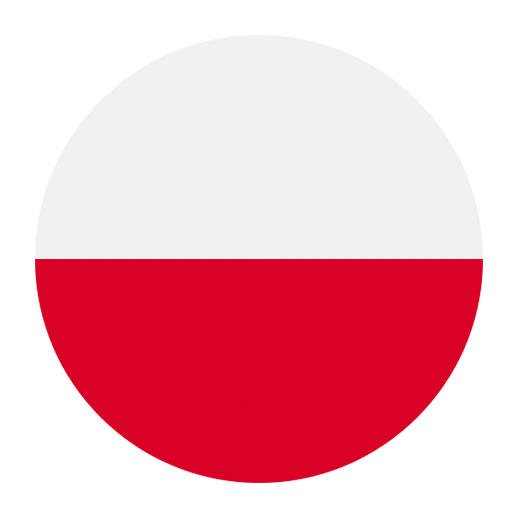Polish, a West Slavic language spoken by over 50 million people worldwide, is known for its complex and rich morphology. For language learners, understanding Polish morphology—the study of the structure of words and word formation—can be both challenging and rewarding. This article aims to provide a comprehensive overview of Polish morphology, focusing on the ways in which words are formed in this fascinating language. By the end, you will have a deeper appreciation of the intricacies of Polish word formation and be better equipped to navigate the language’s complexities.
Introduction to Polish Morphology
Polish, like other Slavic languages, is highly inflected. This means that the forms of words change to express different grammatical categories such as tense, case, number, gender, and mood. The inflectional system of Polish is extensive and affects nouns, pronouns, adjectives, and verbs. Additionally, Polish employs a variety of derivational processes to create new words from existing ones.
Understanding Polish morphology involves two main aspects: inflection and derivation. Inflection refers to the modification of words to convey grammatical information without changing the word’s core meaning. Derivation, on the other hand, involves creating new words by adding prefixes, suffixes, or other morphological elements.
Inflectional Morphology
Nouns
In Polish, nouns are inflected for case, number, and gender. There are seven grammatical cases: nominative, genitive, dative, accusative, instrumental, locative, and vocative. Each case serves a specific grammatical function and changes the form of the noun.
For example, the noun “kot” (cat) can appear in different forms depending on its grammatical role in the sentence:
– Nominative: kot (subject)
– Genitive: kota (possession)
– Dative: kotu (indirect object)
– Accusative: kota (direct object)
– Instrumental: kotem (means or tool)
– Locative: kocie (location)
– Vocative: kocie (addressing)
Nouns also inflect for number (singular and plural). For instance, the plural form of “kot” is “koty.” Gender plays a crucial role in noun inflection, with nouns classified as masculine, feminine, or neuter. Each gender has its own set of inflectional endings.
Adjectives
Adjectives in Polish agree with the nouns they modify in terms of case, number, and gender. This agreement means that the form of an adjective changes to match the grammatical characteristics of the noun. For example:
– Masculine singular nominative: duży kot (big cat)
– Feminine singular nominative: duża książka (big book)
– Neuter singular nominative: duże okno (big window)
– Plural nominative: duże koty (big cats)
Adjectives also have comparative and superlative forms, which are formed by adding specific endings or using separate words.
Verbs
Polish verbs are inflected for tense, aspect, mood, person, and number. There are three main tenses: past, present, and future. The aspect is a crucial feature of Polish verbs, distinguishing between actions that are completed (perfective aspect) and those that are ongoing or habitual (imperfective aspect).
For example, the verb “pisać” (to write) can appear in different forms:
– Present tense: piszę (I write)
– Past tense (imperfective): pisałem/pisałam (I was writing)
– Past tense (perfective): napisałem/napisałam (I wrote)
– Future tense (imperfective): będę pisać (I will be writing)
– Future tense (perfective): napiszę (I will write)
Verbs also have imperative forms for giving commands and conditional forms for expressing hypothetical situations.
Derivational Morphology
Derivational morphology in Polish involves creating new words by adding prefixes, suffixes, and infixes to existing words. This process allows the language to expand its vocabulary and express new concepts.
Prefixes
Prefixes are added to the beginning of a word to modify its meaning. In Polish, prefixes are often used to create verbs with different meanings or aspects. For example:
– “czytać” (to read) → “przeczytać” (to read through)
– “pisać” (to write) → “napisać” (to write down)
– “robić” (to do) → “przerobić” (to redo)
Prefixes can also change the meaning of nouns and adjectives:
– “szczęście” (happiness) → “nieszczęście” (misfortune)
– “miły” (nice) → “niemiły” (unpleasant)
Suffixes
Suffixes are added to the end of a word to create new words or change the word’s grammatical category. In Polish, suffixes are commonly used to form diminutives, augmentatives, and various noun and adjective forms. For example:
– Diminutives: “kot” (cat) → “kotek” (kitty)
– Augmentatives: “dom” (house) → “domek” (small house)
– Noun formation: “czytać” (to read) → “czytanie” (reading)
– Adjective formation: “słodki” (sweet) → “słodziutki” (very sweet)
Infixes
Infixes are less common in Polish than prefixes and suffixes, but they do exist. An infix is inserted within a word to create a new form. For example, the verb “pić” (to drink) can take the infix “-ij-” to form “piję” (I drink).
Compound Words
Polish also uses compounding to create new words by combining two or more existing words. This process is particularly common in technical and scientific vocabulary. For example:
– “samochód” (car) is a compound of “samo” (self) and “chód” (motion)
– “przedszkole” (kindergarten) is a compound of “przed” (before) and “szkoła” (school)
Special Features of Polish Morphology
Palatalization
One notable feature of Polish morphology is palatalization, a process where consonants are softened when followed by certain vowels or the letter “i.” This can affect the pronunciation and spelling of words. For example:
– “kot” (cat) → “kocie” (locative singular)
– “ręka” (hand) → “ręce” (dative singular)
Vowel Changes
Vowel changes, or vowel alternations, also play a role in Polish morphology. These changes can occur due to inflection or derivation. For example:
– “miasto” (city) → “mieście” (locative singular)
– “robić” (to do) → “robię” (I do)
Consonant Clusters
Polish is known for its complex consonant clusters, which can pose challenges for language learners. These clusters often arise due to the combination of prefixes, suffixes, and inflectional endings. For example:
– “przedszkole” (kindergarten)
– “wstrząsnąć” (to shake)
Practical Tips for Learning Polish Morphology
Practice Regularly
Regular practice is essential for mastering Polish morphology. Work on exercises that focus on noun declensions, verb conjugations, and adjective agreements. Use flashcards, online resources, and language learning apps to reinforce your understanding.
Learn Common Prefixes and Suffixes
Familiarize yourself with common prefixes and suffixes in Polish. Understanding their meanings and how they modify words will help you recognize and form new words more easily.
Pay Attention to Context
Context is crucial when interpreting the meaning of inflected words. Pay attention to the grammatical roles of words in sentences to determine their correct forms and meanings.
Use Authentic Materials
Expose yourself to authentic Polish materials such as books, articles, and conversations. This will help you see how words are used in context and improve your understanding of Polish morphology.
Seek Feedback
Practice speaking and writing with native speakers or language tutors. They can provide valuable feedback on your use of inflections and word formations, helping you improve your accuracy.
Conclusion
Understanding Polish morphology is a key step in mastering the language. While the complexity of inflections and word formations can be daunting, regular practice, exposure to authentic materials, and a focus on common prefixes and suffixes can significantly enhance your learning experience. Embrace the intricacies of Polish morphology, and you will find yourself better equipped to navigate the rich linguistic landscape of this beautiful language.

